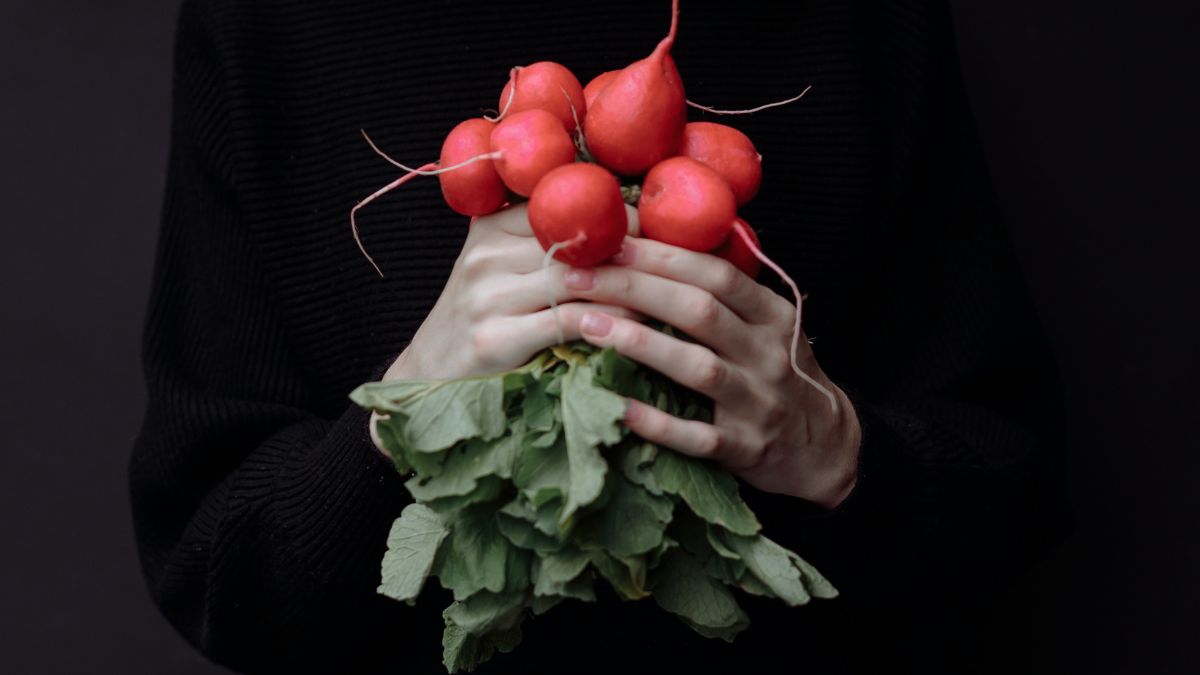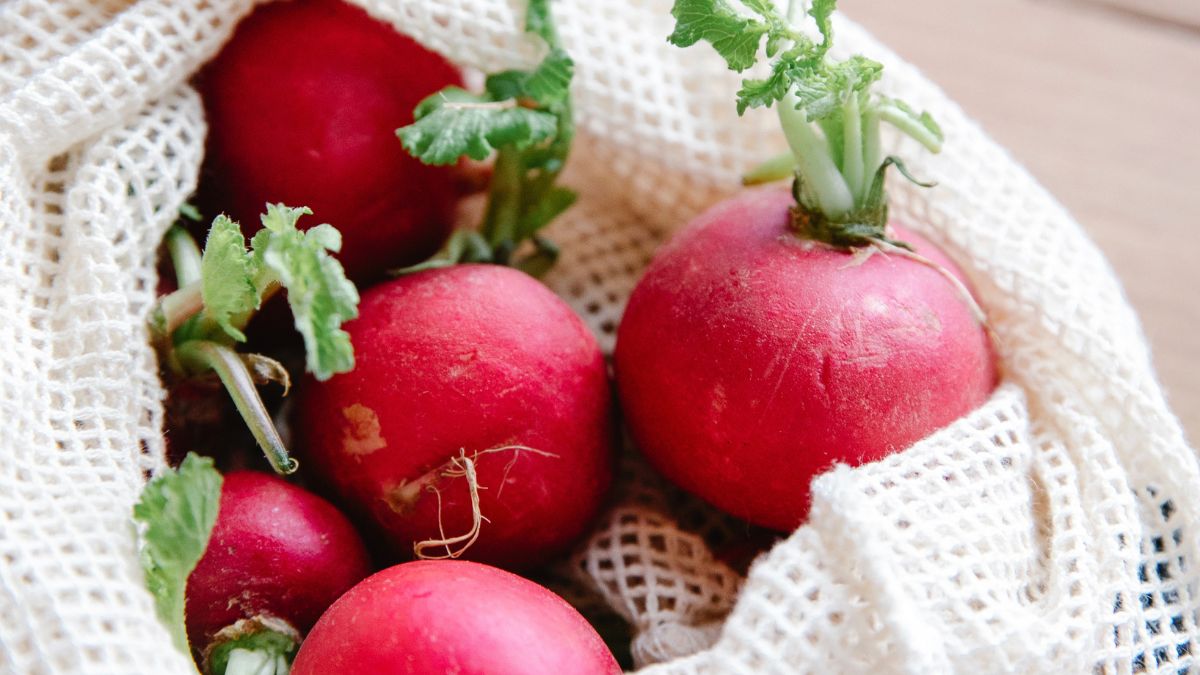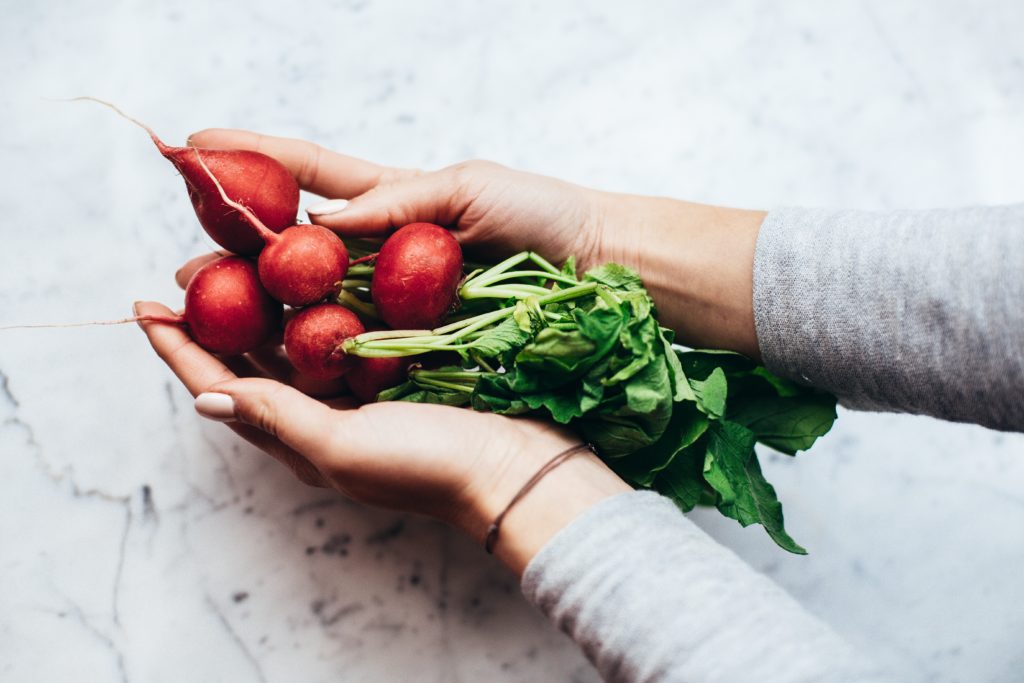Radish greens are a leafy green that grows above the ground from the familiar root vegetable. They are tasty and healthy. Radish is grown worldwide, usually in places with milder and cooler weather. The leaves can be small, round, long, and toothed, depending on the type of radish. They are a great option for healthy cooking.
What are Radish Greens?
Radish greens are the radish plant’s leafy tops. We usually look at the colourful roots, but the greens are also good for you and can be eaten. Radishes are sometimes sold in bags with their tops cut off, but they are often often often left whole. If a bunch of radishes has greens that look fresh and healthy, that means they were just picked and handled properly. The cheap greens can be eaten raw in salads or cooked. Before eating, they need to be washed.
How to Use Radish Greens?
Radish greens and roots can be used separately or in the same dish. Young radish greens are soft and mild enough that you can eat them raw in salads or blend them into pesto. Raw radish greens may be a little fuzzy, bitter, or tough, but they are a great green for cooking.
Pull out the roots and save them for something else to make radish greens. Clean the leaves well to eliminate any dirt or grit that might be stuck to them. Dry the greens, and then chop them as your recipe calls for. Now is the time to cook the greens.
Radish greens can add colour and nutrition to dishes like curries, soups, stews, quiches, frittatas, and casseroles. They can also be sautéed, blanched, braised, or steamed by themselves or with other greens in the same way that kale, Swiss chard, and turnip greens are cooked.
Radish greens and roots can be used together or separately. Young, tender radish greens can be eaten raw in salads or blended into pesto, and the coarse texture is smoothed out when the greens are processed for pesto. Radish greens that are getting old tend to be fuzzy or bitter, making them better for cooking. You can sauté, braise or steam radish greens like you would other leafy greens. Try putting them in soups, stews, curries, stir-fries, frittatas, or quiches.
What does it Taste Like?
Radish greens can taste mildly vegetal, earthy, or spicy and often have a pleasant bitterness in the background. They taste like turnip greens or mustard greens but are usually smaller. Bitterness can be balanced by cooking the greens and adding salt and acid to the final dish.
Depending on the type, radish greens taste like other leafy greens. They can be peppery like arugula or mild like spinach. The taste of greens is milder the younger they are. Radishes like daikon and watermelon, which take longer to grow, tend to have more bitter greens. This flavour can be made less bitter by cooking.
Storage Tips
Radishes and their greens stay freshest when kept separate since the roots soften faster when their tops are still on. Remove the tops by twisting or cutting them off. Wash and dry the greens, preferably with a salad spinner, to eliminate excess water. The roots should be washed and dried before being put in a separate plastic bag. Keep radish greens in your crisper drawer in a plastic bag with a paper towel. They will last for two to three days, so it’s best to use them quickly.
If you don’t plan to use the radish greens immediately, cut the greens off as soon as possible to save the roots. Wash and dry the greens well, then put them in a plastic bag with a paper towel and store them in the crisper drawer for up to three days.
To freeze radish greens, take them off the root and wash them well. Then boil them for 10 seconds and let them dry. Put the greens in a single layer on a baking sheet covered with parchment paper, and freeze them for a few hours. Move to a bag that can be frozen and keep in the freezer for up to a year. When ready to use your greens, just put them in the refrigerator overnight to let them thaw.
Where to Buy Radish Greens?
In the produce section of most supermarkets, grocery stores, food co-ops, and natural foods stores, you can find radish greens. Red radishes are the most common type of radish. Since radish greens are often mistakenly considered a waste product that can’t be eaten, they are usually sold with the roots attached and not separately.
Look at your local farmers’ market or farm stand for a wider range of goods. You’re more likely to find varieties like watermelon, green, black, purple, and daikon radishes, and Asian markets also tend to have a wider range of radish types.
Choose radishes with firm, taut flesh and fresh and perky greens. The leaves should be fresh, green, and whole, not wilted, yellowed, or torn. You may see signs of damage from insects (tiny holes in the leaves). This doesn’t change the taste of the greens, but it could mean that they won’t last as long, so make a note to use those greens as soon as possible.
Radish Varieties
The most common kind of radishes sold in grocery stores is red ones used in salads. Since their leaves and the bunches they come in are usually pretty small, you should plan to add them to another dish or cook them with other greens.
Other kinds of radishes that might be available are French breakfast radishes, which are long and thin and have roots with white tips. Radishes that look like Easter eggs are a mix of pink, white, and purple ones. Their greens are usually bigger than red radishes but taste like red radishes. Radishes with green, black, purple, and daikon greens can also be eaten. Remember that the greens of these radishes usually have a stronger flavour than the red ones.
Are Radishes Good for you?
Radishes might not be your garden’s most popular plant, but they are one of the healthiest. These underrated root vegetables are full of good things for your body and might even help with or stop some health problems.
Five Health Benefits of Radishes
Radishes have not been studied much for their use in traditional medicine, and mostmostmost studies have been done on animals, not humans. People have used radishes as home remedies for hundreds of years. In Ayurveda and Traditional Chinese Medicine, they are used to treat things like fever, sore throat, bile problems, and swelling.
There may be more health benefits to radishes.
1. They won’t Derail your Healthy Eating Plan
A half-cup of sliced radishes has about 12 calories and almost no fat, so that they won’t ruin a healthy diet. When you want something crunchy to eat, they are perfect.
Radishes have a lot of vitamin C, and just just just 1/2 cup gives you about 14% of your daily recommended amount. Vitamin C is an antioxidant that fights free radicals in your body and protects cells from damage caused by aging, bad habits, and environmental toxins. Vitamin C is also an important part of making collagen, which is important for healthy skin and blood vessels.
Radishes contain small amounts of:
- potassium
- folate
- riboflavin
- niacin
- vitamin B-6
- vitamin K
- calcium
- magnesium
- zinc
- phosphorous
- copper
- manganese
- sodium
2. Anticancer Properties
Cruciferous vegetables, like radishes, may help keep cancer from happening. The Linus Pauling Institute says cruciferous vegetables have chemicals that break down into isothiocyanates when mixed with water. Isothiocyanates help eliminate things in the body that can cause cancer and stop tumours from growing.
3. Support a Healthy Digestive System
For every 1/2 cup of radishes you eat, you get 1 gram of fibre. If you eat a couple of servings every day, you can meet your daily fibre goal. Fibre keeps you from constipating by making your stool bulky, making it easier for waste to move through your intestines. Fibre may also help you control your blood sugar level and may also help you lose weight and lower your cholesterol.
The leaves of radish may be especially good for you. Rats fed a high-cholesterol diet in a study in 2008 showed that radish leaves are a good source of fibre that can help the digestive system. This could be caused in part by more bile being made.
A study found that radish juice may help prevent stomach ulcers by protecting stomach tissue and strengthening the mucosal barrier. The mucosal barrier helps protect your stomach and intestines from harmful microorganisms and toxins that can cause inflammation and ulcers.
4. Antifungal Properties
Radishes kill fungi independently, and the antifungal protein RsAFP2 is in them. In one study, it was found that RsAFP2 killed cells of Candida albicans, a common fungus that humans often have. Candida albicans can cause vaginal yeast infections, thrush, and invasive candidiasis when it grows too much.
An earlier study with mice showed that RsAFP2 worked against Candida albicans and, to a lesser extent, other Candida species, and RsAFP2 did not work against Candida glabrata.
5. Help Reduce Zen Effects
Zearalenone, or “zen,” is a poisonous fungus that grows on many corn crops and animal feed. It has been linked to reproduction problems in animals and people, but the risk to people is thought to be low. According to a study from 2008, radish extract raised the level of antioxidants in mice and could be a safe way to reduce or stop the effects of zen.
Conclusion
Radishes are root vegetables from the Brassica family. Radish bulbs, also called “globes,” can be in many different shapes and colours. In the United States, the most popular kind of radish is bright red and looks like a Ping-Pong ball with a small tail. There are also white, purple, and black ones, which might be bigger and shaped like an oblong.
Most radishes taste peppery, but some may also taste sweet. Radishes with lighter colours, like the white winter daikon, taste milder. If you leave radishes in the ground for too long or don’t eat them right away, they get too spicy. Most of the time, smaller radishes taste and feel the best.


